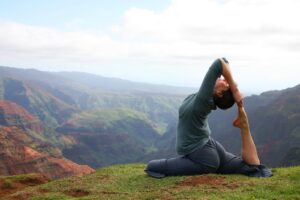So, “yang” tissues are considered muscles, blood and skin. “Yin” – fascia (including ligaments and tendons), bones and joints.
“Yang” practice consists mainly of active rhythmic movements, involves muscle tissue in the work, making it elastic and hardy. In turn, strong muscles stabilize the joints well, provide normal blood and lymph flow in the vessels, and hence high-quality nutrition of connective and bone tissue cells. However, for the purposes of direct impact and healing of “Yin” tissues, less intense and longer loads without the participation of motor muscles, which Yin Yoga offers, are better suited.
Since during the practice of yin yoga https://www.julianalucky.com/post/mommy-and-me-yoga-benefits we do not resist gravity and do not make any movements due to muscle contraction, such a “passive” approach allows us to directly influence the state of the connective tissue and get to the deepest layers of tension frozen in the body. The muscles included in the work are a kind of “lightning rod” for the force of gravity. While it can be used for good and help restore the body’s resource capabilities.
As in nature, it is impossible to single out “pure” yin and yang in the body: one state or quality smoothly flows into another. Yin contains yang and vice versa. Therefore, adhering to the Yang practice, we somehow affect the connective and bone tissue, and during the practice of Yin Yoga we cannot completely turn off the muscles and motor reflexes, although we strive for this.
Such a division of tissues and structures in the body into yin and yang in practice is conditional, but at the same time it well highlights the need to balance your approach to the physical practice of asanas: do not get hung up on strength training and at the same time not go to extremes in the passive practice of acceptance.
It is believed that the older a person is, the more useful Yin practices are for him. So, children do not need them at all: at an early age, it is much more important to develop strength, strengthen muscles and stabilize joints through active yang training. With age, a person becomes “harder”: the joints lose their mobility, and the tissues lose their elasticity. Therefore, after 30 years (and the older, the more) a person needs soft Yin practices to maintain a balance of flexibility and strength.